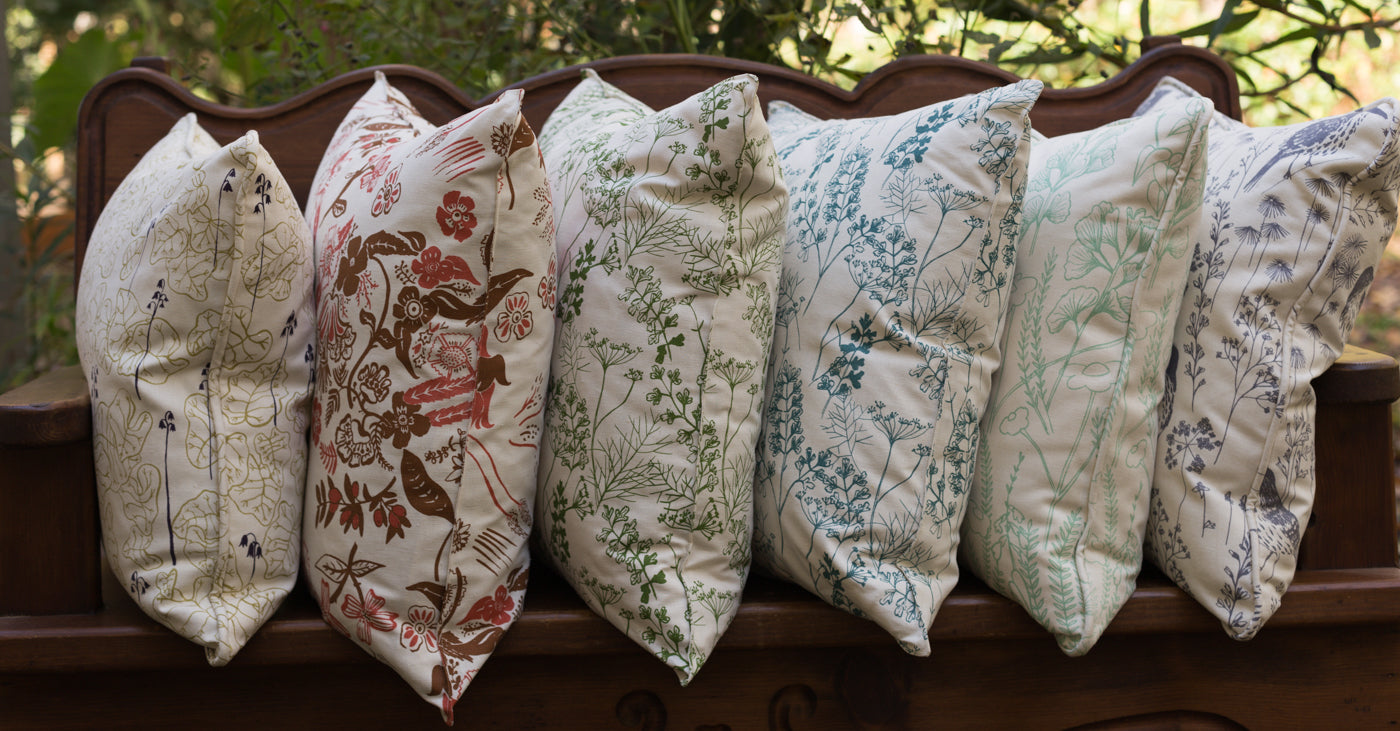
 Recently in our quest to find an ethically-made, biodegradable pillow insert, a vendor made a mistake and shipped us 100% polyester fiber inserts. We're on a mission not to sell polyester (also disguised as "synthetic") pillow forms, and here's why:
Recently in our quest to find an ethically-made, biodegradable pillow insert, a vendor made a mistake and shipped us 100% polyester fiber inserts. We're on a mission not to sell polyester (also disguised as "synthetic") pillow forms, and here's why:
You may have heard of recycled polyester fibers, also known as rPET. At first glance this sounds like a great alternative to polyester fiber inserts. But rPET has its downfalls.
Even though rPET takes 59% less energy to produce than virgin polyester, it still requires more energy than hemp, wool and both organic and regular cotton, according to a 2010 report from the Stockholm Environment Institute. (4)
If the public believes everything they throw away can be recycled, they will probably see no problem in continuing to consume disposable plastic goods. Unfortunately, only a small portion of the plastic we use gets recycled. In the United States, a mere 9% of all plastics were recycled in 2015, according to the US Environmental Protection Agency. (5)
And then there are microplastics. A paper published in 2011 in the journal Environmental Science Technology found that microfibers made up 85% of human-made debris on shorelines around the world. It doesn’t matter if garments are from virgin or recycled polyester, they both contribute to microplastic pollution. (6)
The alternatives are also hazy. Feather down is another popular option for inserts - especially for interior designers. Unlike synthetic, feather down pillows are fluffy, reshapable, insulating and biodegradable. But the majority of companies I've contacted can't tell me where their feather down is coming from, and this can be a problem.
Most feather down these days comes from geese that are raised to be eaten in North America, Europe, and China, which provides 80% of the world’s down. Where the ethical issues come in is in live plucking. That’s exactly what it sounds like. While it is banned in the U.S. and several European countries, it’s apparently still practiced in some Eastern European countries and in China. A goose can be live-plucked several times in a year up to the time it’s slaughtered, and yes, it is extremely painful. (7)
There are certifications that companies can acquire to prove they are maintaining an ethical business in down feather. RDS, Responsible Down Standard, is one. (8)


So, I'll continue my hunt for ethical pillow inserts! and I hope you will too. Until we're able to source an insert we feel good about, we'll have a rotating collection of pillow covers in the shop!
If you're buying new product, try your best to purchase organic or natural fiber inserts. Here's a few options:
Maybe you like to sew your own throw pillows, and if so, good for you! Here's some ideas for you when constructing a new throw pillow:
- Use old rags and scrap fabric to make your own pillow insert. It might not make the fluffiest throw pillow, but just think about all that fabric that will otherwise end up in the landfill! (Using old clothing is a great way to stuff a pet bed. They'll love smelling you!)
- Get thrifty. Head to your local thrift store or scout out estate sales to see if you can spot a decent-looking throw pillow you can clean up at home and replace the cover.
References and additional reading:
1-3 https://ecocult.com/exactly-polyester-bad-environment/
6 - https://fashionunited.uk/news/fashion/how-sustainable-is-recycled-polyester/2018111540000
7 - https://ecocult.com/can-feather-down-be-ethical-and-eco-friendly/
https://goodonyou.eco/material-guide-polyester-2/
https://www.cbsnews.com/news/a-foul-truth-behind-the-down-in-pillows-and-comforters/
Sara on May 31, 2022
Hi Asa! Yes, I recommend wool-filled inserts with an organic cotton lining. See my link in the post!
Asa Rodgers on May 31, 2022
Hi! Have you been able to find a good vendor of pillow inserts using RDS certified feather/down? On the hunt and would love any tips you might have. Thanks!
Asa Rodgers on May 31, 2022
Hi! Have you been able to find a good vendor of pillow inserts using RDS certified feather/down? On the hunt and would love any tips you might have. Thanks!
Sara on May 31, 2022
Hi Asa! Yes, I recommend wool-filled inserts with an organic cotton lining. See my link in the post!